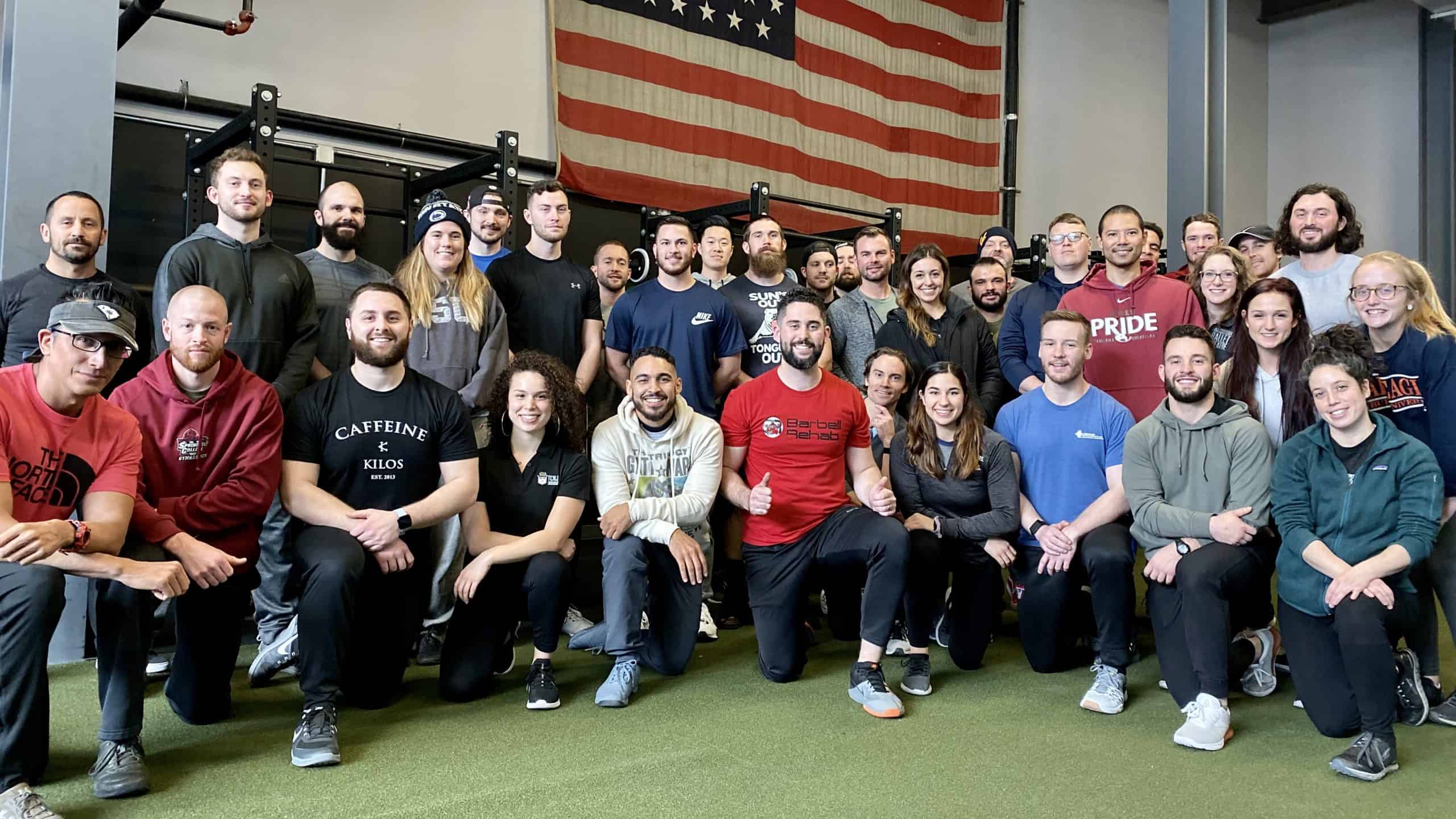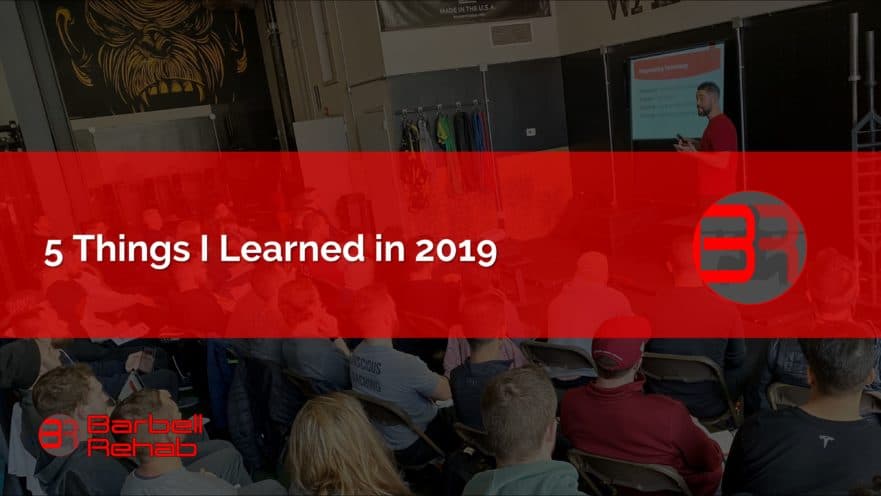2019 was a great year for Barbell Rehab! It was also a year filled with a ton of learning experiences. Learning new things and challenging your own beliefs can be uncomfortable, but it's key to growing as a clinician, coach, and human! So let's get to it. Here are 5 things I learned in 2019.
Not everyone needs to barbell squat, bench press, and deadlift
When I started Barbell Rehab back in 2016, I had a vision that everyone should back squat, barbell bench press, and conventional deadlift in order to build strength. I thought it was the only way to build strength, and therefore, everyone should do it!
Since then, I’ve gradually changed my stance on this. While I still do believe that everyone should train these PATTERNS (squat, hip hinge, horizontal/vertical pressing), I’m much more lenient on the exact exercise. If you're goal is to get better at the squat, bench, and deadlift or to compete in a powerlifting competition, then yes, have at it! But if you just want to get strong and feel good...then they aren't mandatory.
Some people just don’t feel comfortable barbell bench pressing…and that’s ok! If your goal is to build general strength and health, then you should find YOUR big 3, or the variations that feel best to you. More on that in this article.
Programming may be even more important than form
I used to be a strict form guy. I used to think I could look at someone’s form, see a slight deviation from what I thought was optimal, and then say for sure that the person’s pain was correlated with that form default. Now I know it’s MUCH more complicated than this.
While I still do address and optimize form, I’m now also much more lenient on this. Humans are highly adaptable. If the loading stimulus is applied in an appropriate manner, then lack of "perfect" form might not be an issue.
No amount of form “correction” will help you if you’re consistently performing too much volume at an RPE of 9 or higher. For a guide on how to use RPE in your training, click here.
So maybe (just maybe) rounded back deadlifts and kipping pull-ups aren’t so dangerous after all, but trying to do too much of them too quickly is the issue!
I love teaching live workshops!

In September 2019, I taught the first official Barbell Rehab Workshop in Pittsburgh, PA. Things took off from there with successful events in Charlotte, Philadelphia, Boston, and San Francisco. I’m excited to announce that we have seven more workshops currently booked for 2020 (for full course location list click here).
Want to know what I realized? Rehab and healthcare professionals LOVE to learn. It is so refreshing to stand up and teach to a mixed group of 40 people who are all there for the same reason – to better the outcomes of their clients and patients. I can’t wait to see what 2020 has in store for this event!
Work life balance doesn’t exist
2019 was a great learning experience for me with time management. I quickly found out that this idea of work life balance doesn’t exist. What do I mean by this? When most people think of work-life balance, they have this false idea that it means being really proficient at constantly juggling their work and play simultaneously.
I learned the hard way that this isn’t true. From trying to send emails during family events, to trying to post on social media while spending time with my wife, I knew that this wasn’t the way. Enter the concept of batching.
I learned that work life balance is NOT about juggling your work and play at the same time, it means getting really good on focusing on one thing at a time! Instead of firing off random emails throughout the day or trying to do a little here and a little there, I now sit down for a pre-determined block of time and fully immerse myself in what needs to be done. This habit has allowed me to enjoy “phoneless dinners” (leave the phone in the car) with my wife and truly being present in the moment.
Rehab doesn’t need to be pain-free

I used to be obsessed with this notion of “pain-free” training. While I started to shift away from this before 2019 (with some rise of some of the new tendinopathy research), I’d still like to bring it up here because I really do feel like it’s important.
With this whole idea that “pain doesn’t equal damage” now starting to hit the mainstream, I’ve gotten away from both promising and promoting “pain-free” as the solution. Why? Because pain is a part of life. It’s a part of being human.
“Tweaking” your neck or back a few times a year should be normalized, and NOT something that usually requires medical intervention. If it’s happening more frequently than this though, that’s when I usually do intervene via changing form, programming, or addressing psychosocial factors such as false beliefs about pain.
Effective rehab falls somewhere in the middle between complete rest and continuing to train as you were. Where do you fall on the loading continuum? (find out here)
As a guideline now, when dealing with pain or an injury, I usually recommend working into the 3-4/10 pain region, provided that symptoms return back to baseline within 24 hours. Although this approach may not apply in every situation (ex: you may want to avoid pain in the acute stages), it is a good general guideline. Aim to train in a “tolerable” fashion.
2019 was an awesome year. If you’re reading this, I’d like to thank you for being a part of the journey. Cheers to a successful 2020!

